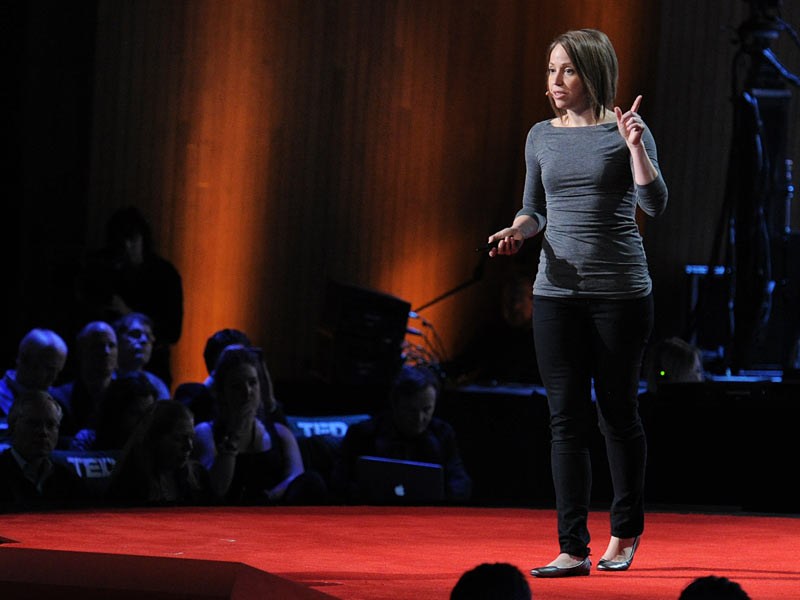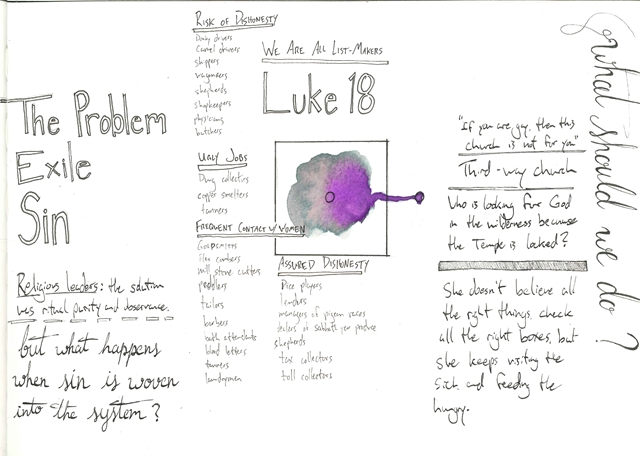By Jeff Brumley
John Jay Alvaro uses a variety of terms to describe the way he prepares his sermons at Spring Creek Baptist Church in Oklahoma City.
And “outline” isn’t one of them. “Manuscript” doesn’t make the list, either.
Instead, it’s a single page of drawings, with some elegant text here and there.
“I call it sermon scripting,” Alvaro said of the meticulously drawn, colored and painted pages he takes with him into the pulpit each week.

He also calls it mind mapping, visual drafting and sketch notes, among others.
The bottom line, he said, is that the 8-by-24 inch pages, adorned with calligraphic lettering and ornate images, help him stay focused and calm as he preaches.
“It does force me to slow down and stay with it,” he said.
Using drawings, doodles, sketches and paintings from which to speak or teach publically is becoming increasingly frequent in church, business and academic settings. Alvaro and others who use the technique say it sparks creativity and improves the ability to recall details during sermons, lectures and speeches.
‘To make spontaneous marks’
What is useful to some appears as nothing more than elaborate doodling to others.
“There is no such thing as a flattering definition of a doodle,” author Sunni Brown said in a 2011 TED Talk titled “Doodlers, unite!”
Brown, who teaches adults how to use visual arts to stimulate better information processing, traced negative attitudes about the word to the 17th century, when it referred to a simpleton or fool.

Today, she said, the definition is at its lowest. Doodling is commonly seen as dawdling, monkeying around, to make meaningless marks or to do nothing.
“No wonder people are averse to doodling at work,” said Brown, author of The Doodle Revolution.
The truth about doodling and sketching, she said, is just the opposite. Rather than a frivolous way to zone out during meetings, it enhances creativity and prevents attention loss.
Doodling is “to make spontaneous marks to help yourself think,” she said.
People who doodle retain information 29 percent better than those who do not.
“It has a profound effect on creative problem solving and deep information processing.”
Drawing closer to God
Others who use some form of drawing to process spiritual information say they’ve encountered the attitudes Brown described in her TED Talk.
But also the benefits.
“People think ‘how rude,’ but I’m more focused while doodling,” said Marsha Baker, a St. Louis resident and artist who blogs and leads workshops on “Doodle Devotionals” and “Sermon Sketchnotes.”
Creating elaborate drawings helps foster prayer and meditative states that can open participants to the movement of the spirit in ways that verbal or written forms cannot, Baker said.

“There’s quite a sketchnote movement out there,” she said, adding that several books have been published on the topic in the past several years.
She advises her clients not only to use the technique along with, or instead of, journaling but also in church while listening to sermons.
The technique often includes starting by carefully writing the relevant Scripture verse. Around it can be drawn images, symbols, shapes and prayers that help one visualize their feelings and thoughts around that verse.
“This is a tool that helps you focus and concentrate,” she said.
Words distract from sermon
That’s also how Alvaro describes his feelings about his illumined sermon sketch notes.
“I’m a visual, non-linear” learner, Alvaro said. “To me, if it’s in a script form, I don’t internalize it.”
Type-written words arranged in an outline or manuscript are more distracting and require reading while preaching, Alvaro said.
But a single 8-by-24 sheet of drawings and artistic script is more effective because Alvaro can remember an entire story illustration or personal account by seeing just one or two images he sketched and colored.
“In drawing, I am working through how I would think through [during the sermon],” Alvaro said. “By spending 20 to 30 minutes on an image, it creates a story I can tell without notes.”

He found the opposite to be true during sermons delivered using traditional notes.
“I had a hard time connecting with my sermons when they were manuscripted. They distanced me from the sermon.”
He said it’s not that he doesn’t love crafting the language of sermons. But in doing so, Alvaro said he can become so fixated on the words that he misses the deeper meaning of the texts.
“But you really can’t fly past them when you are drawing them,” he said.
Alvaro said he started using the sketch note technique from the beginning of his Spring Creek pastorate in March 2014. He said that it was scary at first.
“When I found out I could do it and not fall on my face in the moment — that was freeing for me,” he said.
Passion reignited
Freeing, but not any less time consuming. Alvaro said it usually takes six days to prepare the singe page of sketchnotes he will use for a sermon,
“They are visual drafts over the course of a week that start on something as small as a Post-it-Note,” he said.
The final process occurs early Sunday mornings, usually in a coffee shop where Alvaro spends two to three hours inking his notes just before delivering the sermon.
“That usually reignites it for me,” he said.
The process also has a spiritual benefit, Alvaro added.
“It’s definitely prayerful and meditative for me.”
